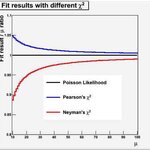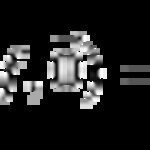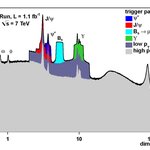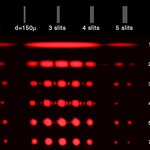Physics

We are all familiar with velocities. Velocities tell us how positions change with time. Velocities can not be assigned to individual objects, as they describe a relation between pairs of objects. We know this since Galileo Galilei. Yet, in common day language this profound fact is mostly ignored.
Make a statement like "The ball has a distance of 30 meters", and sure enough, people will frown and reply with a question for clarification: "Distance to what?". Make the equally silly statements "The ball has a velocity of 20 meters per second" and the same folks will nod to indicate they perfectly…

Last week I spent a few interesting days in the pleasant winter setting of Engelberg, a mountain location in the Swiss alps. There I attended the CHIPP 2012 winter school, an event organized by Vincenzo Chiochia from University of Zurich and Gabriella Pazstor from University of Geneva. They invited me to give a three-hour mini-course in Statistics for data analysis in High-Energy Physics, something which was a new experience for me. It took me the best part of the last couple of months to get prepared, but I was glad I did. In the end, the material I put together could have been used…

First I will play the old gauge symmetry game repeated everywhere for EM. I will then teach that old dog a new trick that ends up with the same bone. I will then struggle a little over the lingo to describe what I am interested in, the center of the quaternion group. I will then show how a new new trick, the new trick shifted to the right just enough to work, will lead to a gauge symmetry proof.
Let's review gauge symmetry in EM. Start with an arbitrary scalar function f. Take the conjugate of the 4-derivative operator and apply it to f:
No one writes it this way. The contempt of Lord…

The CMS Collaboration has just released the results of a deep study of their sample of lead-lead collisions, produced at a center-of-mass energy of 2.76 TeV per nucleon by the Large Hadron Collider.
Why lead-lead collisions instead of the "normal" collisions of protons against protons ? The energetic collision of heavy nuclei may produce a hot plasma of quarks and gluons, an extreme state of matter whose physics is targeted by the ALICE detector at the LHC, while ATLAS and CMS are designed for the "simpler" physics of proton-proton interactions. But the latter are omni-purpose detectors, and…

The CHIPP 2012 winter school of particle physics is over, and so is the 50th winter meeting on nuclear physics. The two events had three things in common: they were both held in renowned locations for winter sports in the Alps (Engelberg, Switzerland, and Bormio, Italy); they both ran from January 22nd to 27th; and I attended both as a lecturer.
In a sense, it sucks. It would have been so much better if these two events had been scheduled, say, a month apart: I would then have been able to make best use of the few free hours per day devoted to skiing. Instead, I was forced to run from one…

I read ArXiv regularly. It's not easy because most of the latest publications of physics go there before print. Apart from pedagogical articles (for teaching purposes), all the articles are aimed at other scientists working at the state of art in the subject. I try read the principles at the beginnings of the paper, skim the maths, and see if the conclusion match the rest of physics. So apologies to the authors if I accidentally misquote them.
Today there were enough fascinating articles that I wanted to write about them. This might become an occasional series so let me know if you find this…

Fire a machine gun at a wall with two slits. Look at the pattern bullets make that pass through. The pattern is the sum of two Gaussian curves. Classical physics makes sense.
Repeat the exercise with electrons or photons. Where there is constructive interference, the signal is strong. Where there is destructive interference, the signal can drop to zero. Waves behave that way all the time. Yet quantum interference works even if particles are fired at extremely low rates, such as once a day.
The logic of quantum mechanics in experiments with two slits is not just strange: the explanation…

A particle which flies from a point C to point L in the Earth gravitation should submit to the brachistochrone problem decision.
Well-known that the particle flying in a gravitational field of the Earth on a cycloid, spends less time, than flying on direct line. It concerns as neutrino so photon. Hence, why not to direct on the same way photons (for example, impulses of centimetric radio-waves over the Earth between the same points) and to compare time of their flight to time of these neutrinos?

This week's edition of the CMS Times features a short piece by A.Rao, where some points are made on the issue of correct statistical analysis of high-energy physics data.
If you read the piece, you will find a few quotes from myself. Since January 1st I am in fact the chair of the CMS Statistics Committee, which is the body charged with the supervision and the suggestion of good statistics practice in the production of our physics results. It should not come as a big surprise to long-time readers of this blog, since I have manifested several times my interest in statistics, and I also…

“The vacuum is empty” Richard Feynman
According to Dick himself, this was his catchiest
motto, but eventually he abandoned it for being as wrong as it sounds right.
There are several arguments in favor for
space actually being a substance-like something rather than empty nothingness.
This smells like ether, and thus many people who think themselves superior
because they understand Einstein’s theory of relativity, hate
this point of view. The orthodox relativity dogma holds that vacuum is sheer
emptiness.
Space-time is indeed fundamentally based on something abstract. The very…